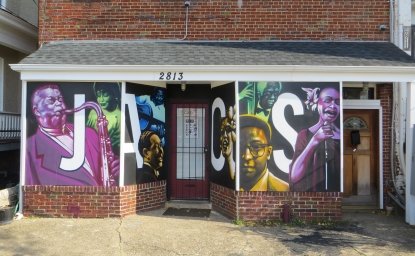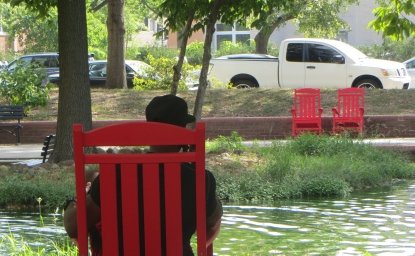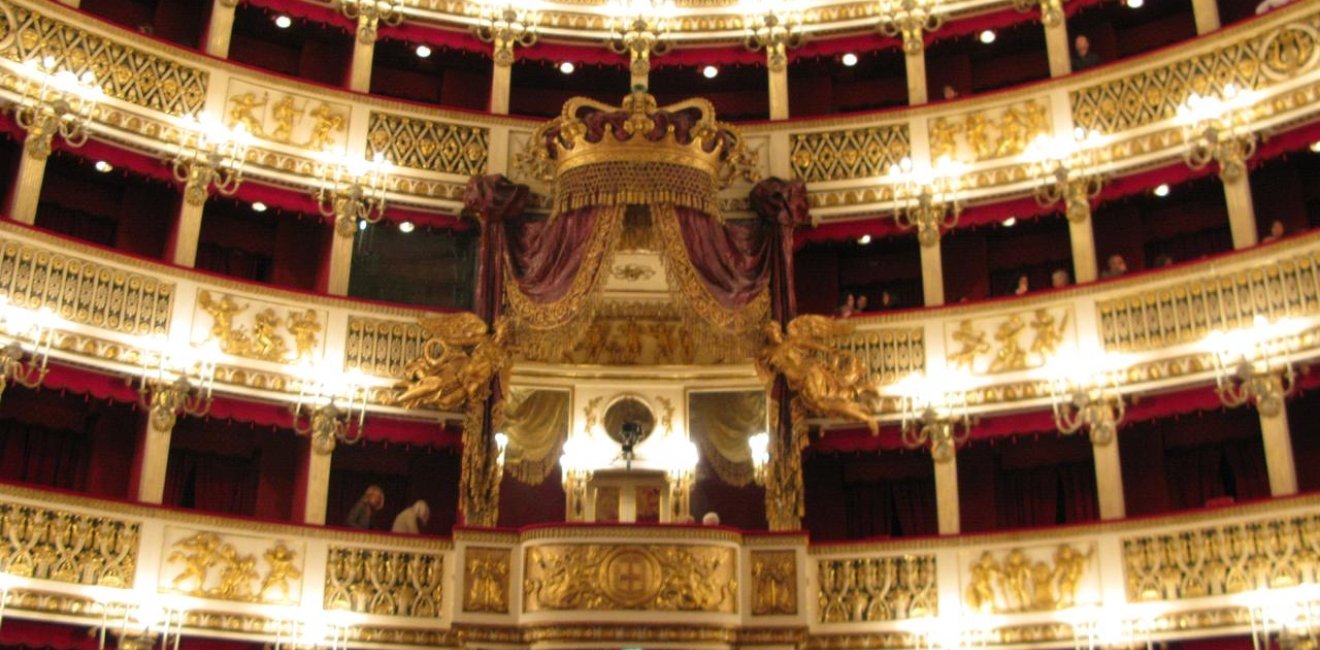Ulysses, if Homer is to be believed, was the first mariner to escape the temptations of the Bay of Naples. According to The Odyssey, Ulysses had heard of the bay’s infamous sirens — part women, part bird or nymph-like creatures — that lured sailors to their death by singing so beautifully that no one could sail on without succumbing. Thus, when returning from the Trojan War via the bay, Ulysses plugged the ears of his crew with beeswax and bound himself to the mast until they had sailed safely out of range of the sirens’ audible temptation. Angry over their failure to seduce their prey, one of the sirens, Parthenope, drowned herself in the sea. The original settlement on the bay was said to have grown on the spot where she washed ashore, claiming her name as its own (the area is now part of the city of Naples, Italy).
Various communities huddled around the Bay of Naples date, in one incarnation or another, back to the second millennium before the birth of Christ. Ever since, this urban area has remained one of the world’s great cultural fulcrums. The bay’s environment is so perfect that local residents have rarely been forced to be enterprising; they simply lived off the land and sea in the mild Mediterranean climate, as safe harbor, turquoise sky, and indigo sea sustained lush vegetation boosted by a deep layer rich volcanic soil and an easy growing season.
Yet all was not quite idyllic. The inhabitants of this earthly paradise faced the constant possibility of near-instantaneous annihilation by Mount Vesuvius. Categorized as a “red” volcano for the lava that periodically spews from its crater, Vesuvius has erupted cataclysmically over the centuries, an ever-present reminder of the transitory folly of human existence.
This combination of natural appeal and peril has nourished a lively culture marked from the time of its original settlers, the Epicureans, by a distinctive blend of sensuous, joyful hedonism and rigorous, stern sanctity — of paganism and piety. Thus, Naples has been home both to the inventors of pizza and chocolate ice cream, on the one hand; and to countless religious orders, on the other.
This fusion of heaven and hell — of so-called high and low cultures — stands at the center of the Neapolitan creative impulse. Since its founding, Naples has been a city of sudden and disconcerting juxtaposition of opposites, the sort of place that creates and recreates over and over again the kind of delirious urbanism that constantly bursts forth with invention and creativity. This creative impulse has been visible in many forms, not the least of which is music. As sage Neapolitan observer Barringer Fifield has suggested, Naples is a city that was founded, after all, on a song.
Music’s hold over the city has remained omnipresent throughout its history. This was never truer than during the seventeenth century, when Naples remained under its Spanish viceroys and became the music capital of Europe.
Viceregal Naples was dominated by an endless number of religious institutions — churches, chapels, monasteries, convents, hospitals, orphanages, schools — connected to various orders within the Roman Catholic Church. These oases of calm and magnificence contrasted with the chaos of the streets outside their high, protective walls.
Many of these establishments required choral and instrumental music to celebrate God’s glory. As a result, baroque-era Naples consumed musicians of talent. The musicologist Dinko Fabris argued that the hiring of musicians rested more on merit than in other European cities because the Spanish viceroys remained for more-or-less fixed terms. Consequently, permanent patterns of patronage associated with a dominant family could not be sustained as the preferences of successive viceroys changed over time. A hierarchy of privilege and power evolved, often becoming linked to the changing status of the religious institutions at which a musician worked.
Musicians in Naples, as elsewhere, were artisanal employees of their patrons. The local love of the theatrical, music, and dance greatly impressed visitors from the North. The seventeenth-century English diarist John Evelyn recorded that the city’s “women are generally well-featured but excessively libidinous. The country people [are] so jovial and addicted to music that the very husbandmen almost universally play on the guitar, singing and composing songs in praise of their sweethearts, and will commonly go to the field with their fiddle.”
Communal musical forms were immediately incorporated into the increasingly popular performance art of opera, as librettists drew on such stock comedic characters as nurses, pages, magicians, and allegorical figures in their works. However, the Neapolitan environment — like that of Venice — was dominated by institutions rather than by wealthy families. This system created a stable demand for musical talent, with employers hiring outsiders as well as musicians from socially unacceptable groups who demonstrated talent. Some of the most important contributors to Neapolitan opera, such as the Sicilian-born Alessandro Scarlatti (who moved to the city from Rome) came from elsewhere because they could compete more or less fairly to earn appointment in a relatively open system. Others were products of the city’s remarkable conservatories, which, with the exception of Venice, were unmatched.
According to some estimates, there were seven conservatories and 617 religious institutions (including 248 churches) in mid-seventeenth-century Naples, offering musical education to 368 boys in 1660, a number that later increased. The four most-prominent conservatories — the I Poveri di Gesù Cristo (founded in 1589), Sant’Onofrio a Capuana (1578), Pietà dei Turchini (1583), and Santa Maria di Loreto (1537) — fell under civic and viceregal control. Once again, Venice was Naples’ primary competitor, with several vibrant conservatories of its own. However, Venetian musical education was concentrated at orphanages for girls, whereas Neapolitan conservatories catered to boys. This meant that, upon reaching adulthood, the graduates of the Neapolitan conservatories were more likely to pursue professional careers in music.
Orphanages sponsored conservatories in order to provide their boys with a livelihood. As in the famous orphanages for girls in Venice, some parentless children were the illegitimate offspring of the wealthy and notable. Poor families often attempted to send their sons to the conservatories because they provided free room and board. Some conservatories recruited from particular regions around the kingdom — Apulia provided the most students — while others specialized musically.
Boys who had been castrated were of particular value given the popularity of virtuoso castrated vocalists — the castrati — who were thought to supercharge female vocal ranges with male lung capacity. Perhaps the most famous, Carlo Maria Broschi (known by his stage name, Farinelli), followed precisely this path from Apulia to Naples on to trans-European eighteenth-century rock star status.
Some of the best musicians in the city earned their living by teaching at the conservatories. The opera master Francesco Provenzale, for one, taught at two of the four conservatories during a 40-year career. At its height, this system produced a stream of innovative musicians who transformed the musical landscape of the era, including, among many, Giovanni Battista Pergolesi, Francesco Provenzale, as well as Alessandro and Domenico Scarlati.
Many graduates of Neapolitan conservatories had significant eighteenth-century professional careers as performers and composers across Europe. They came from a variety of backgrounds, and rose through recruitment and educational networks that reached from the top to the bottom of Neapolitan society. The city’s musicians formed what became known as the Neapolitan School, whose members were avidly sought by impresarios and aristocrats from Paris to Saint Petersburg, from Madrid to Vienna to London.
Such energy could not last forever, however. Over the course of the eighteenth century, political and economic crises eviscerated the Neapolitan institutions’ capacity to employ musicians. Faculty members remained in place too long to allow replenishment of their ranks from below, so dozens of highly sought-after conservatory graduates spread across the face of Europe. Nonetheless, by the early nineteenth century the Neapolitan music community was still renowned for its technical virtuosity.
As the music world’s center of gravity moved to Paris, Naples and the Neapolitan music machine would be “reformed.” In 1806, Joachim Murat, appointed to the Neapolitan throne by his brother-in-law, Napoleon Bonaparte, consolidated the conservatories into a single school as part of a general rationalization and reform of local artistic institutions. This school, the San Pietro a Mailella, inherited the remarkable music libraries and manuscript collections of its predecessors and continues to train musicians today.
Though Neapolitan music became embedded in these larger Italian and European trends, it retained a considerable degree of distinctiveness and reputational excellence. Across the 28 centuries of its existence, Naples reveals the wisdom of the urbanist Rem Koolhaas, who famously argued in Delirious New York, his evocation of New York during the 1970s, that “the Metropolis strives to reach a mythical point where the world is completely fabricated by man, so that it absolutely coincides with his desires.” Since its founding, Naples has been such a city of sudden and disconcerting juxtaposition of opposites — the sort of place that creates anew the kind of delirious urbanism that bursts forth with invention and creativity. It has done so, singing and playing music all the while.
Author

Former Wilson Center Vice President for Programs (2014-2017); Director of the Comparative Urban Studies Program/Urban Sustainability Laboratory (1992-2017); Director of the Kennan Institute for Advanced Russian Studies (1989-2012) and Director of the Program on Global Sustainability and Resilience (2012-2014)

Urban Sustainability Laboratory
Since 1991, the Urban Sustainability Laboratory has advanced solutions to urban challenges—such as poverty, exclusion, insecurity, and environmental degradation—by promoting evidence-based research to support sustainable, equitable and peaceful cities. Read more

Explore More in Building Inclusive and Livable Cities
Browse Building Inclusive and Livable Cities
Hometown D.C.: America's Secret Music City

Bringing New York to the Broadway Stage

10 Steps to a More Genuine DC Experience


